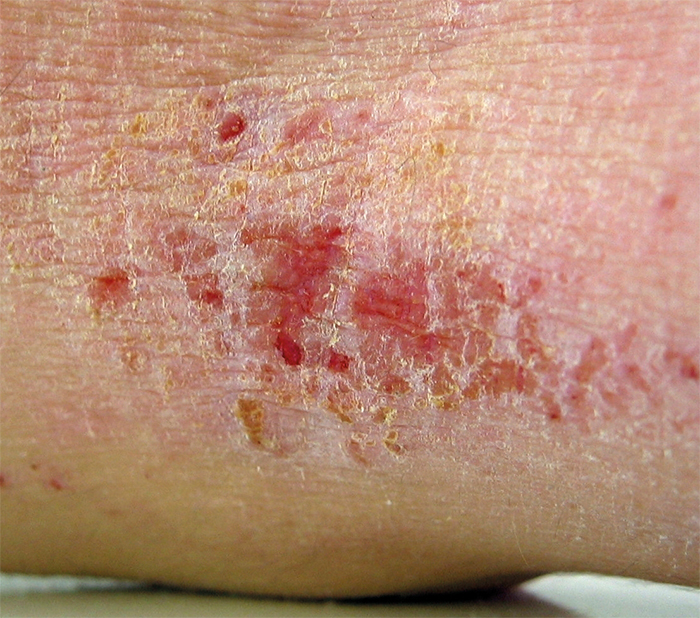Eczema affects people of all ages, but is most common in children, affecting five to 15 per cent of those younger than seven years old in the UK. According to the National Eczema Society, most children grow out of their symptoms, with around 65 per cent being symptom-free by the age of seven, and 74 per cent by age 16.

The exact cause of eczema is unknown, but it is thought to be a combination of genetic and environmental factors. Environmental factors are triggers that initiate symptoms in genetically predisposed individuals. Triggers can vary, but commonly include soap and detergents, house dust mites, animal fur and saliva, pollen, and wool or synthetic material. Hot weather, high or low humidity, cigarette smoke and excessive perspiration can also be factors. Some sufferers report stress as a trigger. However, how this contributes to the condition is unclear. Eczema is also occasionally linked to food allergens, particularly in infants.
Eczema is characterised by periods of symptom flare-ups, followed by times when symptoms ease or disappear. Common symptoms include dry, itchy skin and rashes. If the affected skin is scratched, this can lead to redness, swelling, cracking, weeping, crusting, scaling and eventual thickening of the skin. Skin may also be susceptible to secondary bacterial infections.
In infants, symptoms typically appear as a patchy rash on the cheeks or chin at six to 12 weeks of age. This can progress to red, scaling and oozing skin that is more prone to infection. Once the child starts crawling, the inner and outer parts of the arms and legs may also be affected. In older children, the rash tends to appear behind the knees, inside the elbows, on the sides of the neck, around the mouth and on the wrists, ankles and hands.
